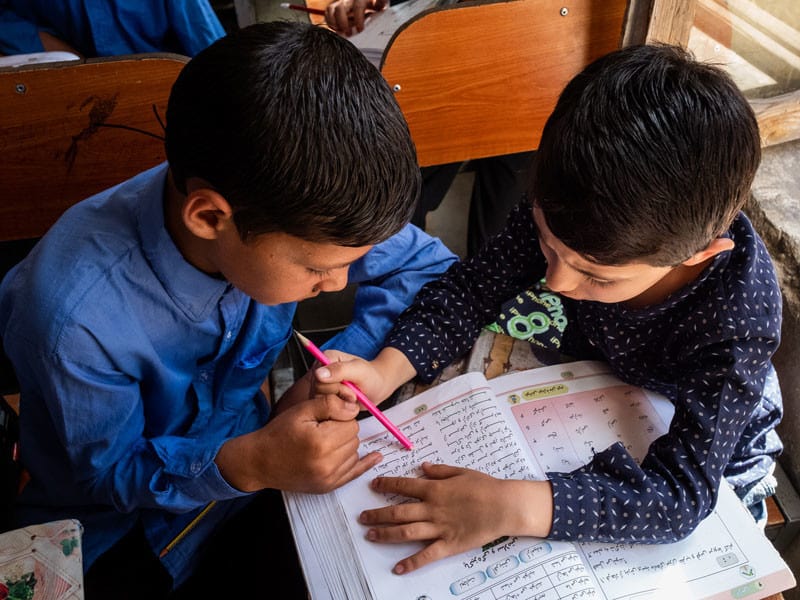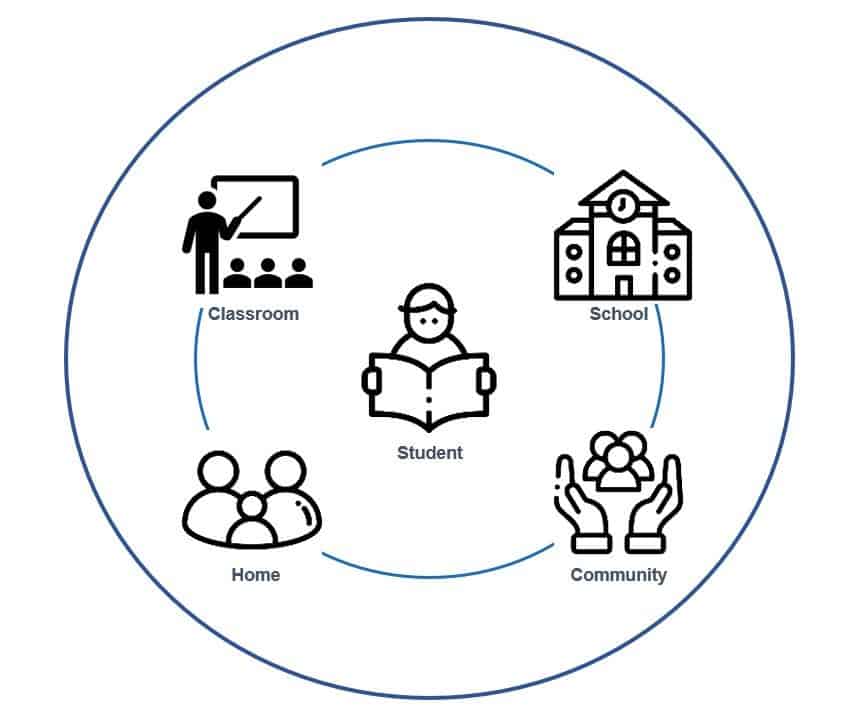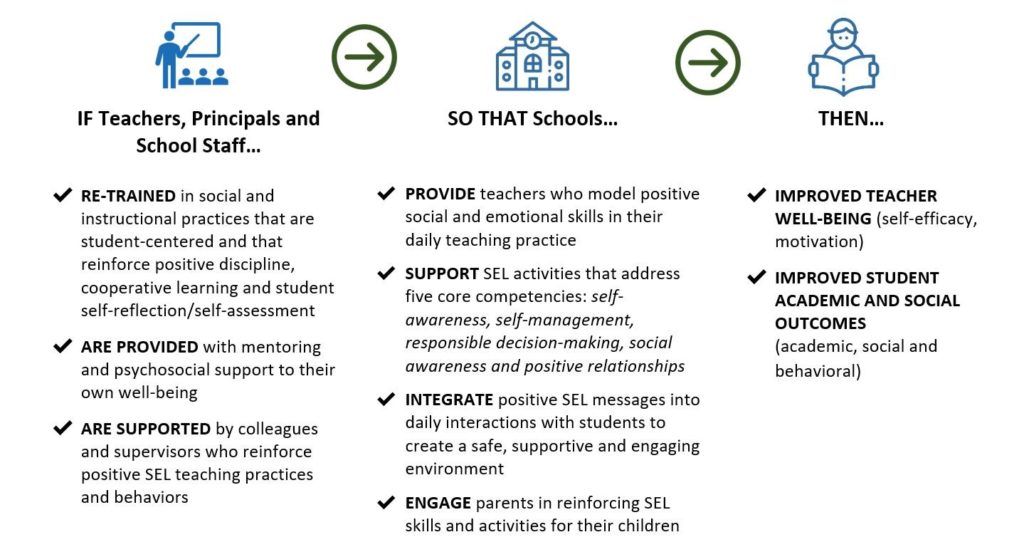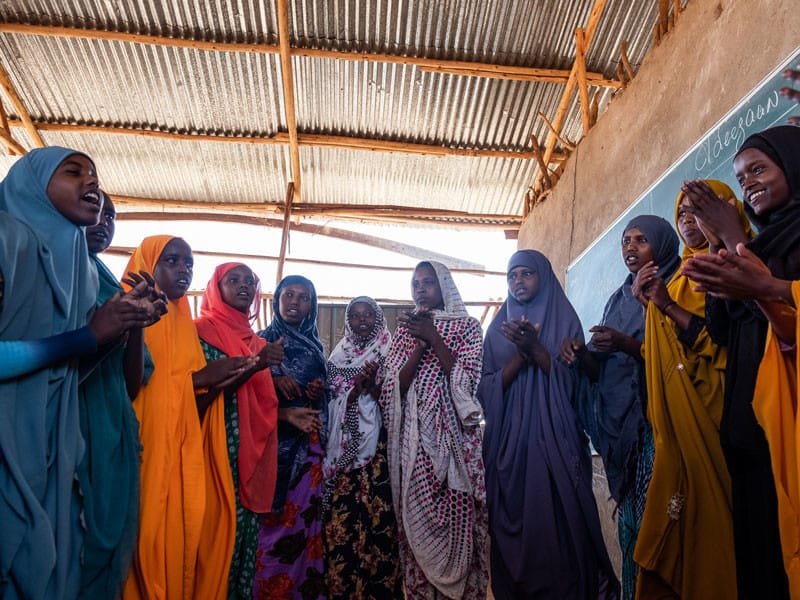Social and Emotional Learning in Education for Development

Around the world, Creative is known for its inclusive approach to improving education delivery from ministries of education to the classroom. Collaboration, stakeholder involvement and safe and trusting environments are in Creative’s DNA and all contribute to Social and Emotional Learning (SEL).
Social and Emotional Learning is the process through which children and adults acquire and effectively apply the knowledge, attitudes and skills necessary to understand and manage emotions, set and achieve positive goals, feel and show empathy for others, establish and maintain positive relationships, and make responsible decisions. The rapid expansion of SEL programming in the United States and Europe reflects an increasing evidence base that SEL can improve lifelong student well-being and learning outcomes.
In developing countries and in contexts affected by crisis and conflict, SEL has been shown to be particularly important for children who have faced severe hardship, including poverty, displacement, loss of loved ones and violence. SEL empowers children with the skills to focus, regulate their emotional response, cope with stress and manage conflicts nonviolently. SEL programming also improves teachers’ psychological health and well-being. By improving the behavior and well-being of their students, teachers often report feeling happier, more organized and responsive and able to manage stress.
Creative’s holistic approach to SEL
 Creative utilizes a holistic and multi-tiered approach to integrating SEL components into its programs. Establishing and identifying support structures within the school, the home and the community are the bedrock of Creative’s approach across education programming and are supported by experience and research. Creative acknowledges that children and youth who benefit from SEL interventions do not function in isolation of their homes, schools or larger communities, so to support positive social behavior change for children and youth, interventions must consider all aspects of the environment and identify the most effective approaches for building on individual and community strengths and overcoming adversities.
Creative utilizes a holistic and multi-tiered approach to integrating SEL components into its programs. Establishing and identifying support structures within the school, the home and the community are the bedrock of Creative’s approach across education programming and are supported by experience and research. Creative acknowledges that children and youth who benefit from SEL interventions do not function in isolation of their homes, schools or larger communities, so to support positive social behavior change for children and youth, interventions must consider all aspects of the environment and identify the most effective approaches for building on individual and community strengths and overcoming adversities.
Theory of Change
Creative’s projects foster lifelong well-being and learning outcomes for children and youth through activities that practice mindfulness and develop cognitive and social skills. Our SEL activities are designed to be age-appropriate, sequenced by developmental skill and relevant to individual and community context. Creative’s activities build on the SEL domains developed by the Collaborative for Academic Social and Emotional Learning, as well as adaptations of these, recognized by organizations worldwide, such as the Inter-Agency Network for Education in Emergencies and the Education in Crisis and Conflict Network.
Creative’s SEL Guiding Principles and Best Practices
Responsive to Ages and Stages: Design activities and assessment tools that reflect the unique cognitive, physical, social and emotional needs of children at each age and developmental stage.
Inclusion of All Students: Assure equity through design of SEL activities that allow all children to participate; are sensitive to differences of gender, religion, and culture; and respond to diverse cognitive and physical challenges to learning.
Whole School Approach: Nurture a school climate that includes positive discipline, praise and codes of conduct that ensure healthy, safe and peaceful learning environments.
Involvement of Parents, Caregivers, Community: Engage families and communities to assure awareness, invite participation and collaboration, and reinforce the holistic nature of SEL in and out of school.
Context-Driven: Align SEL competencies to the unique and prioritized values of communities identified through rigorous inquiry.
Conflict-Sensitive: Develop SEL programming to increase school and community skills for and pathways to engage in mediation, healing and reconciliation and to attain well-being.
Establish Referral Mechanisms: Design programming to include referral pathways, should additional psychosocial and/or protection needs arise and should further support be needed for a child or adult.
Do No Harm: Ensure that in relation to physical, social, emotional, mental and spiritual well-being, actions respond to assessed needs, are committed to evaluation and scrutiny, support appropriate responses and acknowledge the power relations between stakeholders.

Our SEL Activities by Education Project
Afghanistan: USAID’s Afghan Children Read project works with the Ministry of Education to integrate the building of SEL skills into the reading curriculum for grades 1 to 3. SEL is included in teacher training and embedded in teacher observation tools. The project is embarking on two research efforts: to understand the universality of the embedded SEL competencies within the Afghan context, and to understand the efficacy of our integrated SEL approach in student SEL skill acquisition.
Ethiopia: USAID’s READ II project works to improve the reading proficiency and educational attainment of children in grades 1 to 8. READ II has addressed student and teacher well-being through its “crisis modifier” mechanism, activated to mitigate the effects of crisis, conflict or natural disaster on students’ learning outcomes and overall well-being. Further, through both the crisis modifier and planned programming, the project is rolling out a Student Success and Support Toolkit that guides school communities to address the needs of students with vulnerabilities and to introduce SEL into classrooms, recreation and enrichment.
Morocco: USAID-funded project Read for Success-National Program for Reading is working closely with the Ministry of Education to ensure better inclusion for all students, including those who have special needs. The project team seeks, where appropriate, ways of promoting gender equality, inclusive education (of students with physical, emotional and cognitive disabilities) and tolerance for students, teachers and communities.
Nigeria: Under USAID’s Nigeria Education Crisis Response (ECR) program, Creative worked to expand access to quality learning opportunities for displaced, out-of-school children and youth ages 6 to 17. In partnership with International Rescue Committee and more than 30 Nigerian organizations, ECR provided displaced children with age-appropriate SEL instruction integrated into their basic education. In partnership with IRC and with funding from by DFID, Creative supported the North East Nigeria Transition and Development–Education in Emergencies (NENTAD–EIE) project. Expanding upon the ECR model, SEL was rolled out to public schools as part of an after-school tutoring program for at-risk students in grades 2 to 4.
Somalia: USAID-funded project Bar ama Baro (Teach or Learn) is a collaboration with the Ministry of Education, Culture and Higher Education designed to ensure that non-formal education curriculum and teacher development materials and guides emphasize social and emotional learning and well-being for both learners and teachers. Teachers will learn and model relevant SEL skills such as fostering empathy, effective problem solving and conflict resolution, using a sequenced SEL curriculum for learners age 8 to 15. To address teachers’ own well-being, teachers also will participate in activities designed to promote stress management, confidence and self-care.
